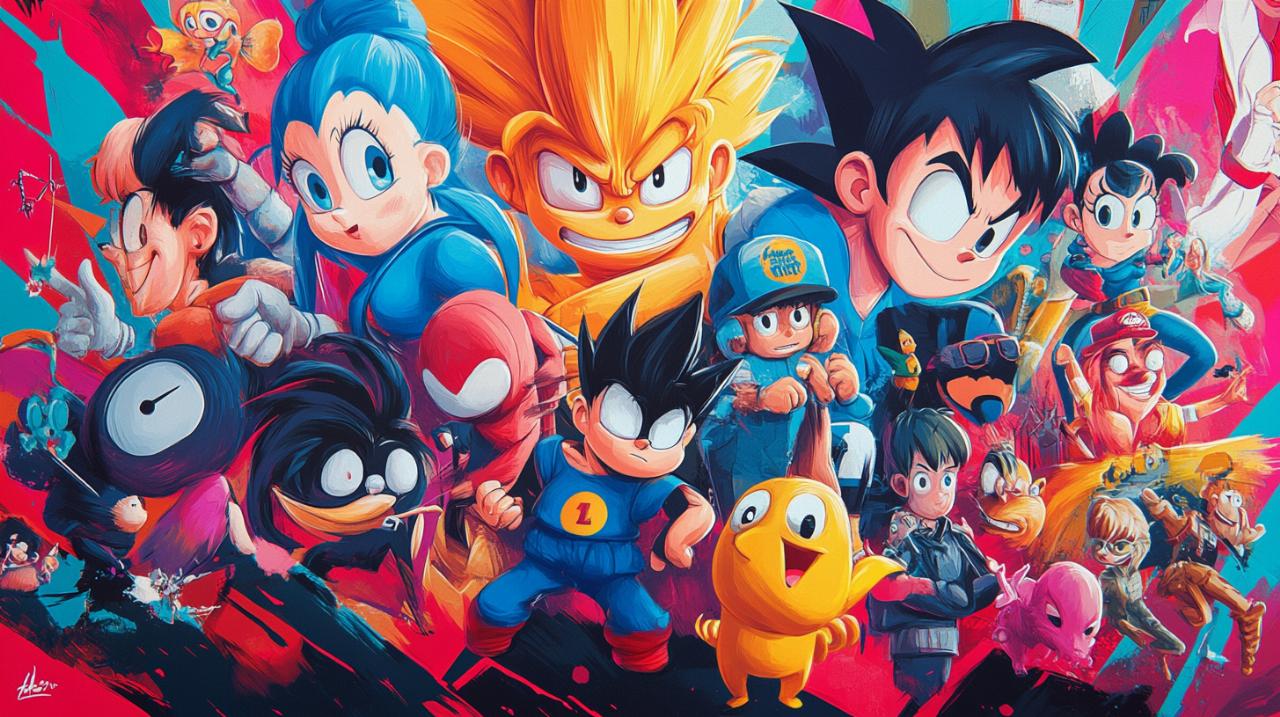The vibrant world of 1990s animation holds a special place in the hearts of those who grew up watching Saturday morning telly. These programmes were more than simple entertainment; they were a defining part of childhood, offering characters and stories that resonated deeply with young audiences. Today, as adults reflect on those formative years, the cartoons of the 90s continue to spark conversations about nostalgia, parenting, and the way children engage with screen time.
The Golden Era of Saturday Morning Telly: Defining Cartoons That Shaped a Generation
The 1990s marked a remarkable period for children's television programmes, with animation studios pushing creative boundaries and introducing viewers to a diverse range of characters and narratives. This era saw the emergence of shows that not only entertained but also educated, imparting life lessons and positive behaviour through cleverly crafted storylines. Parents and children alike tuned in, forming shared experiences that have endured for decades. The decade was defined by its willingness to experiment with both content and form, resulting in a rich tapestry of animated series that appealed to a wide audience.
From the powerpuff girls to rugrats: characters we grew up with
Among the most beloved characters of the 90s were the super-powered trio of The Powerpuff Girls, who fought crime while balancing the trials of childhood. The show, which aired from 1998 to 2005, became a cultural phenomenon, celebrated for its themes of equality and empowerment. Similarly, Rugrats introduced audiences to the imaginative adventures of a group of toddlers, offering a unique perspective on everyday life from a child's point of view. These programmes, alongside others such as Arthur, Franklin, and Courage the Cowardly Dog, provided relatable role models and scenarios that helped children navigate their own emotions and social interactions. The characters were memorable not just for their antics, but for the genuine lessons they imparted about friendship, bravery, and resilience.
Classic shows like Scooby-Doo continued to captivate audiences with their mystery-solving antics, while Dragon Ball Z brought high-energy action and themes of perseverance to the small screen. Pokémon, which first aired in 1997, sparked a global phenomenon, encouraging children to explore the world around them and build connections through shared interests. Even older characters such as Tom and Jerry and Mickey Mouse found renewed popularity during this period, proving that timeless humour and creativity transcend generations. The variety of content available during the 90s ensured that there was something for every child, fostering a sense of community among viewers who eagerly discussed their favourite episodes and characters.
Animation Techniques and Storytelling That Set the Decade Apart
The storytelling techniques employed by 90s cartoons were innovative and engaging, often incorporating educational content seamlessly into entertaining narratives. Shows like Mister Rogers' Neighbourhood, which had been on air since the 1960s but remained a staple in the 90s, emphasised emotional intelligence and kindness, offering children a safe space to explore their feelings. Educational programmes such as Arthur combined relatable scenarios with clear messages about problem-solving and empathy, making learning an enjoyable experience. Animation styles varied widely, from the bold, graphic aesthetic of The Powerpuff Girls to the more traditional hand-drawn approach of shows like Franklin and Arthur, each contributing to the unique visual identity of the decade.
Child development specialist Dr Siggie Cohen has noted the importance of parental involvement in understanding what children are watching and why certain programmes resonate with them. She emphasises that too much screen time without guidance can lead to misconceptions, and advises parents to set clear boundaries while ensuring that screen time is not used as a punishment. The animated series of the 90s often encouraged positive television viewing habits by creating content that was both entertaining and enriching, allowing children to absorb valuable lessons without feeling lectured. This balance between fun and educational value is a hallmark of the decade's programming, and it remains a benchmark for quality children's entertainment today.
Nostalgia and Cultural Legacy: How 90s Cartoons Continue to Influence Modern Entertainment

The enduring appeal of 90s cartoons is evident in the way they continue to shape modern entertainment and cultural conversations. As adults revisit these programmes, they are reminded of the warmth and simplicity of their childhood, a time when the world seemed full of wonder and possibility. This nostalgia has fuelled a resurgence of interest in classic children's shows, with many parents choosing to introduce their own children to the programmes they loved growing up. The emotional connection to these cartoons is powerful, serving as a bridge between generations and a reminder of the values and lessons that have stood the test of time.
The emotional connection: why these shows still matter today
Lauren Isler, a mum who noticed her three-year-old was having trouble sleeping and transitioning after watching newer television programmes, decided to show her children shows from the 90s such as Franklin, Arthur, and Mister Rogers' Neighbourhood. The results were striking: her kids' screen time went down, and turning off the telly became much easier. They were able to walk away from the television to play, demonstrating a healthier relationship with screen time. Lauren believes that 90s shows teach children how to be good people, instilling values such as kindness, honesty, and perseverance. Her video about this switch in television programming has garnered over 128 million views on Instagram, highlighting the widespread resonance of her message and the collective longing for the quality content of the past.
The vida trendy blog has explored how these classic programmes continue to inspire discussions about parenting and childhood development, with many parents seeking out content that offers more than just entertainment. The life lessons embedded in 90s cartoons, from the importance of courage as depicted in Courage the Cowardly Dog to the value of accepting oneself as shown in Aladdin, remain relevant in today's fast-paced, technology-driven world. Shows like Dexter's Laboratory encouraged children to dream and pursue their passions, while The Flintstones taught that happiness is a choice we make every day. These timeless messages resonate with audiences of all ages, offering comfort and guidance in an ever-changing landscape.
Revival and Reboot Culture: Bringing Childhood Favourites Back to Life
The phenomenon of revival and reboot culture has brought many beloved 90s cartoons back into the spotlight, with studios recognising the commercial and cultural value of these classic programmes. Modern adaptations and continuations of shows such as The Powerpuff Girls and Rugrats have introduced these characters to a new generation, while also offering original fans a chance to reconnect with their childhood. The success of these revivals speaks to the enduring quality of the storytelling and the universal appeal of the characters, proving that great content never truly goes out of style.
The rise in parents delaying their children's exposure to screens, as observed by Dr Siggie Cohen, reflects a growing awareness of the impact that television can have on young minds. By choosing programmes with strong educational content and positive messages, parents can ensure that screen time is a constructive part of their children's development rather than a passive distraction. The cartoons of the 90s serve as a gold standard for this approach, offering a blueprint for creating content that is both entertaining and enriching. As viral content continues to shape conversations on platforms such as Instagram, the legacy of these classic shows is celebrated and shared, ensuring that their impact will be felt for generations to come.
The cultural legacy of 90s cartoons extends beyond nostalgia, influencing the way modern creators approach storytelling and character development. The emphasis on life lessons, positive behaviour, and emotional intelligence has become a cornerstone of quality children's programming, and the techniques pioneered in the 90s continue to inspire animators and writers today. Whether through the adventures of Scooby-Doo teaching that it is okay to make mistakes, or Popeye reminding viewers that eating vegetables matters, these shows have left an indelible mark on popular culture. As parents and educators seek to navigate the complexities of screen time boundaries and children's entertainment, the lessons of the 90s remain a valuable guide, reminding us that the best programmes are those that entertain, educate, and inspire in equal measure.

